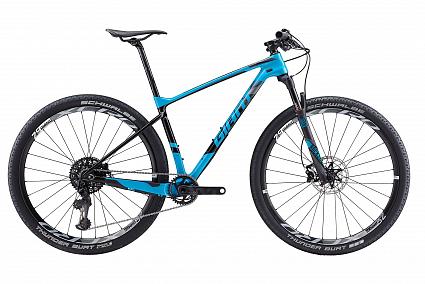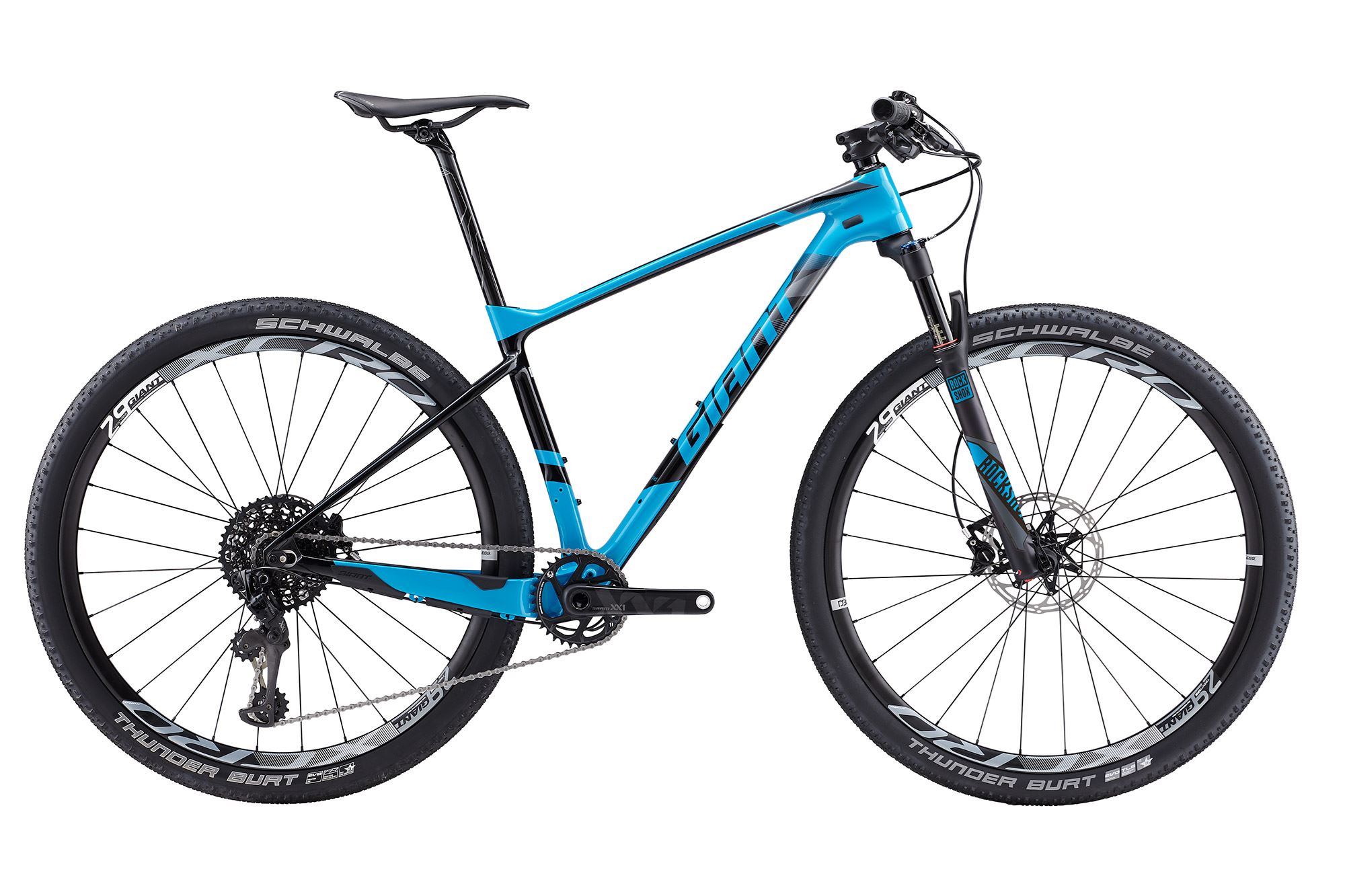

Three years ago Giant Bicycles made big waves when they boldly declared that both 29” and 26” would be replaced as wheel standards for mountainbikes by 27.5”, a standard originally known as 650B. For the 2014 model year they rolled out 27.5” versions of their XC machines, the XTC hardtail and full-suspension Anthem. Of course, whenever the bike industry declares a “new revolution in design” is in progress, it’s always fun to check up on the prediction later (often to be enjoyed with a fine glass of schadenfreude). Now that a three-year product cycle has elapsed, haters might be eager to point out that Giant has backtracked on phasing out 29er”. Yet at the same time, it would be difficult to claim that 27.5” has failed, since the new Anthem and XTC bikes are being marketed as +/29”, meaning that in addition to the typical 29” wheels with 2.0-2.25” wide tyres the frames also can fit 27.5” plus that is, 27.5” wheels with tyres in the wide (but not fatbike wide) 2.8-3.2” range. The idea is that the 29er wheels give the bike a fast XC character while the 27.5”+ give surer grip and gusto in rougher trails conditions while avoiding the heavy wheels and long wheelbase of required of 29 x 3.0” tyres.
This dual wheel concept is the natural byproduct of the decade-long trend towards wider tyres in all virtually all categories of bicycles, facilitated by hub-mounted disc brakes and to a lesser extent new, wider axle/hub standards. Since it is no longer a braking surface, the wheel’s rim diameter is less relevant than the tyre’s overall diameter. A 27.5”+ tyre fits a rim with a 584mm bead set diameter but has an outside dimension approaching that of a 29 x 2.1” on a 622mm rim. That’s a lot of tyre to squeeze between fork blades and chain stays, so many manufacturer’s are taking up the new “Boost” standard for thru-axle hubs, which adds 10mm to front hubs and 6mm to rear hubs. With the cassette pushes further outboard, optimum chainline also moves away from the centerline of the frame, though the distance between the pedals, commonly known as Q-factor, is not necessarily affected.
All these changes have added to the already bewildering number of sku#s for MTB cranksets and hubs (especially if you add in the product catering to fatbikes). Just to point out one more aspect of this trend, the popularity of plus-sized tyres is prompting rim manufacturers to offer wider options. Arguably this is more important for 27.5”+/29er dual wheel concept than for the separate 29er+ niche. Whereas the latter simply seeks to add a bigger footprint to a 29er wheel, the 27.5”+ tyre needs to provide the wider footprint as wheel as closely approximate the overall diameter of a 29 x 2.2” tyre so that the wheels are interchangeable without changing the effective gearing, bottom bracket height, and handling. Thus a 27.5”+ tyre suited for a dual wheel bike like those in Giant’s new lineup may have an especially tall sidewall, that would otherwise collapse under hard cornering if not supported at the bead by a wider rim. Suitable rims have internal widths upwards of 40-45mm, far bigger than the ~21mm that was common up until 2000, or even the 25-30mm of more recent times. Just to complicate things, not all 27.5”+ tyres are being marketed to the 27.5”+/29er dual concept, so some are just short and wide.
The dual wheel setup of the new 2017 Giant MTB lineup has a parallel in the 3T Exploro that Head Bike Hugger Byron is reviewing right now. The Exploro uses the same two rim standard (ISO-584mm and ISO-622mm) but with comparatively skinnier tyres and more pointedly, dropbars. The Exploro is designed to fit 40mm tyres on 700C wheels (to put that in MTB terms, 29 x 1.6”) or 2.25” tyres on 650B (ie 27.5”). Thankfully, the 3T takes conventional compact road cranks and 100x15mm/142x12mm thru-axles, and 650B x 2.25” tyre doesn’t need particularly tall sidewalls to get to the size of a 700C x 40mm.
…We're riding townies, adventure, and mountain bikes. Find recommendations on our store page. As Amazon Associates we earn from qualifying purchases.